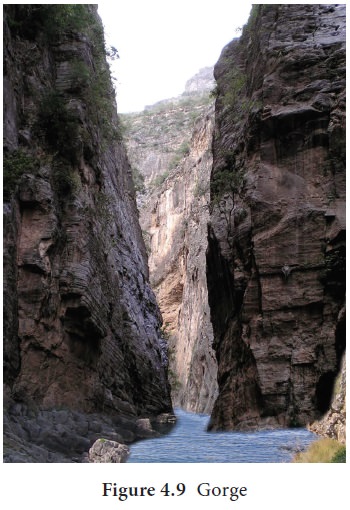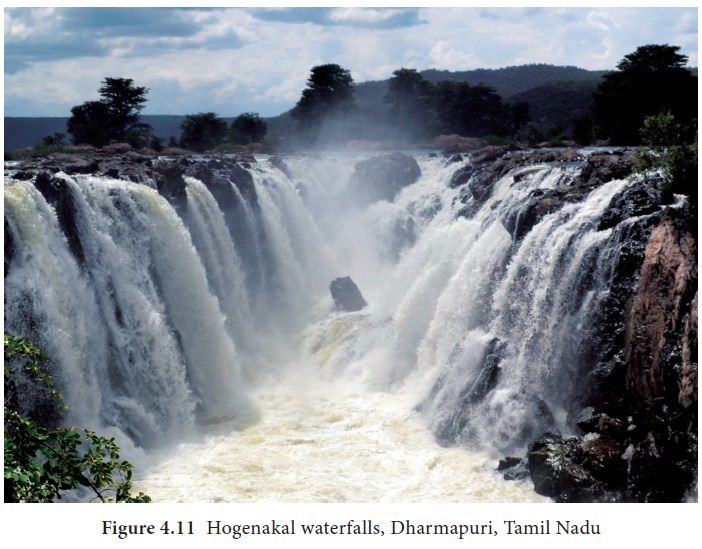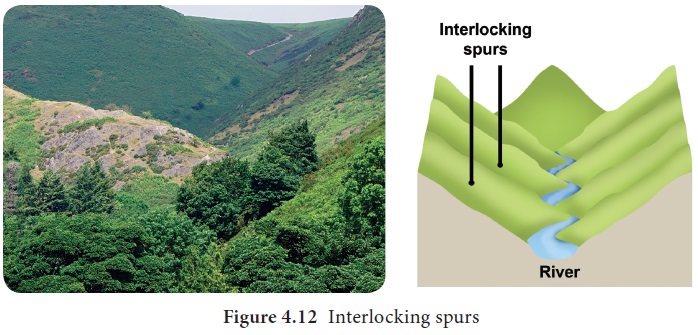Chapter: 11th Geography : Chapter 4 : Lithosphere: Exogenic Processes
Landforms by the Erosional Work of River
Landforms
by the Erosional Work of River
The significant landforms resulting from erosion by
rivers include gorge, canyon, V-Shaped Valley, waterfall, pothole, structural
bench, river terrace, river meander, ox-bow lake, peneplain, etc.
Gorges are formed due to active down cutting of the valleys. So, a Gorge is a narrow and deep river
valley which has steep slopes.

Canyons
are extended form of gorges. Canyons represent very deep, narrow
but long valleys. The steepness of the valley sides depends on the nature of
the rocks. The Grand Canyon of the Colorado River in the state of Arizona, USA
having a length of 482.8 kilometers and depth of 2088.3 meter is the largest
canyon in the world. The Canyon of Gandikota is situated on the Pennar River in
Andhra Pradesh is known as the Grand Canyon of India.
V-Shaped
Valley The valleys made by the rivers are erosional landforms. The
valley is formed in the youthful stage of the river erosion. Due to the steep
slope and large volume of water, the river cuts its bed vertically forming
narrow and deep river valley. This is called as V-shaped valley.
Rapids and waterfalls
Rapids are stream sections with extremely strong
currents, numerous obstacles, and steps in their streambeds. A waterfall is a vertical
drop in a streambed. Both water fall and rapids are formed by vigorous erosion.
Series of a waterfall in a river is called as Cascade.
Plunge pool
A plunge pool is a deep depression in a stream bed at the base of a waterfall. It is created by the erosional forces of falling water at the base of a waterfall.
Grooves
Long and narrow depression at the base of a
waterfall made by river runoff is called a groove. The grooves are created by
water eroding soil from a hill or mountain in a short period of time.
The swirling movement of the water falling into the
plunge pool is called eddying.
Interlocking spurs
An interlocking spur, also known as an overlapping spur, is a projecting ridge that extends alternately from the opposite sides of a V-shaped valley. A river with a winding course flows down the interlocking spur.

Pot Holes
The kettle-like small depressions in the rocky beds of the river valleys are called potholes. They are always cylindrical in shape. Potholes are generally formed in coarse-grained rocks such as sandstones and granites.
River Terraces
The narrow step like flat surfaces on either side
of the valley floor are called river terraces. They represent the level of
former valley floors.

Related Topics